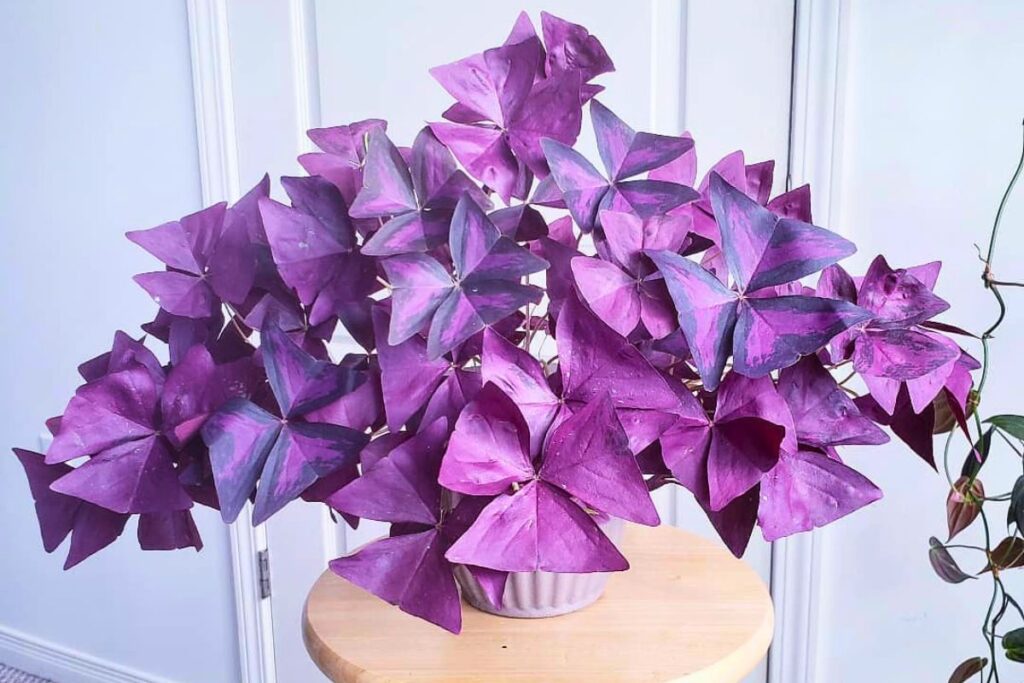Growing oxalis plants indoors can bring a delightful splash of color and cheer to any room. These charming plants, often referred to as shamrock plants, boast clover-like leaves and delicate flowers, making them a popular choice for houseplant enthusiasts. Whether you’re a seasoned plant parent or just starting your indoor garden journey, this guide will provide you with all the necessary tips and tricks to help your oxalis plants thrive.

Contents
Choosing the Right Oxalis Plant
The first step in growing oxalis plants indoors is selecting the right variety. Oxalis species come in various colors and sizes, each with unique characteristics. Some popular indoor varieties include Oxalis triangularis, known for its striking purple leaves, and Oxalis regnellii, which features lush green foliage. When choosing your oxalis plant, consider the aesthetic you want to achieve and the specific care requirements of each variety.
Providing Optimal Light Conditions
Oxalis plants thrive in bright, indirect light. Place your plant near a window where it can receive ample sunlight without being exposed to direct rays, which can scorch the leaves. If natural light is limited in your home, consider using a grow light to supplement the plant’s light needs. Aim for about 4-6 hours of bright, indirect light daily to keep your oxalis happy and healthy.
Maintaining the Perfect Temperature
Oxalis plants prefer moderate temperatures, typically between 60-75°F (15-24°C). Avoid placing your plant in drafty areas or near heating vents, as extreme temperature fluctuations can stress the plant. Additionally, oxalis plants go through a dormant period during the colder months. Reduce watering and keep the plant in a slightly cooler spot to support this natural cycle.
Watering Wisely
One of the most critical aspects of oxalis plant care is proper watering. These plants prefer consistently moist soil, but they don’t tolerate waterlogged conditions. Water your oxalis when the top inch of soil feels dry to the touch. Ensure the pot has adequate drainage to prevent water from pooling at the bottom. Overwatering can lead to root rot, so it’s better to err on the side of caution and avoid letting the soil become too soggy.
Fertilizing for Growth
Oxalis plants benefit from regular feeding during their active growing season, typically from spring to early fall. Use a balanced, water-soluble fertilizer diluted to half strength every 2-4 weeks. Be cautious not to over-fertilize, as this can cause nutrient buildup and damage the plant. During the dormant period, reduce or cease fertilizing altogether.
Pruning and Maintenance
To keep your oxalis plant looking its best, remove any dead or yellowing leaves regularly. Pruning encourages new growth and helps maintain the plant’s overall shape. Additionally, if you notice any pests such as aphids or spider mites, treat the plant with insecticidal soap or neem oil to prevent infestations from spreading.
Repotting and Propagation
Oxalis plants generally don’t require frequent repotting, but it’s a good idea to refresh the soil every 1-2 years. When repotting, choose a pot that’s only slightly larger than the current one to avoid overwhelming the plant. If you want to propagate your oxalis, gently separate the rhizomes (underground stems) and plant them in fresh soil. This method allows you to grow new plants and share the joy of oxalis with friends and family.
Understanding Dormancy
One unique feature of oxalis plants is their natural dormancy period, typically occurring in the winter months. During this time, the plant’s growth slows down, and it may lose some leaves. Don’t panic—this is a normal part of the plant’s life cycle. To care for your oxalis during dormancy, reduce watering and place the plant in a cooler location with indirect light. Once the dormancy period is over, you can resume regular care, and the plant will spring back to life with fresh growth.
Troubleshooting Common Issues
Even with the best care, you may encounter some challenges while growing oxalis plants indoors. Here are a few common issues and how to address them:
- Yellowing Leaves: This can be a sign of overwatering or poor drainage. Check the soil moisture and ensure the pot has proper drainage.
- Wilting Leaves: Wilting can indicate underwatering or exposure to direct sunlight. Adjust your watering schedule and move the plant to a spot with indirect light.
- Pest Infestations: Regularly inspect your plant for pests and treat any infestations promptly with insecticidal soap or neem oil.
Growing oxalis plants indoors can be a rewarding experience, adding a touch of elegance and vibrancy to your home. By following these care tips and paying attention to your plant’s needs, you’ll be well on your way to enjoying a thriving indoor garden. Happy planting!
